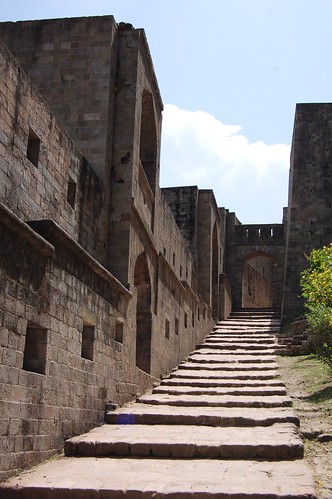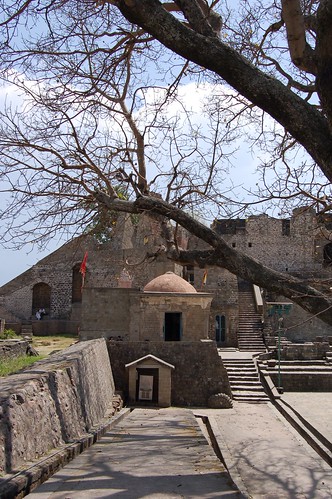I don’t know why it was so hard to get out of bed each morning in McLeod Ganj! Was it the cool temperatures? Fresh air? Altitude? Tranquility? In New Delhi, we never escape the sounds of people and vehicles, but only chirping birds disturbed the total silence at our cottage here. On the morning of April 5, Theresa and I rolled out of bed, ate a quick breakfast in the Glenmoor’s dining area, and took off for some sightseeing. Our driver, Sanju, carefully maneuvered his little taxi on the rubble-strewn mountain roads, deftly zipping through hairpin curves and patiently yielding to other cars when two lanes suddenly and frequently became one, as we explored the Kangra Valley in the north Indian state of Himachal Pradesh.
First stop – Norbulingka Institute
The Norbulingka Institute is dedicated to the preservation of Tibetan art and culture. Passing through the archway, we entered a shady terraced garden with stone paths and narrow waterways.
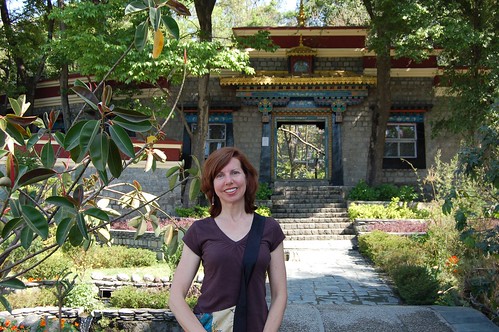
We eventually meandered to the Deden Tsuglagkhang, a temple housing a 14-foot gilded copper Buddha and many stunning paintings created by the institute’s artists. The temple’s rooftop offered excellent views of the town and mountains.
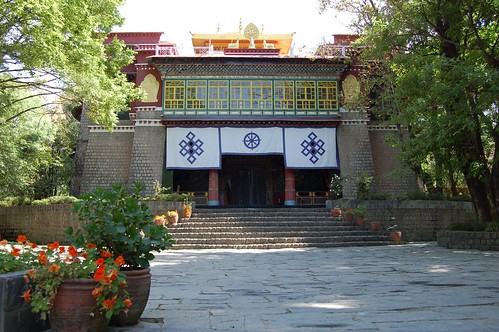
Sipping a lemon soda at the café, I watched fuzzy seeds rain down from the trees and relished the peace created by gurgling fountains, greenery and omnipresent prayer flags. Here are some more shots from our visit to Norbulingka.
I like this quote by the Dalai Lama on Norbulingka (lifted from the institute’s website):
Buddhism changed the whole Tibetan way of life, giving rise to a more compassionate community, in which there is a more peaceful attitude towards ourselves, towards our fellow human beings, towards animals and towards the environment. In today’s world there’s a lot of talk about peace and non-violence, but the real factor in creating genuine peace is compassion, not just education and technology. Where there is compassion, a sense of community, a sense of respect for others’ rights is automatic. In order to promote compassion, it is not sufficient just to talk; it needs to be spread through example. I believe that our peaceful and compassionate Tibetan society is such an example; that’s why it is worth preserving, and I am pleased to see that in its work to keep Tibetan culture alive, the Norbulingka Institute is actively contributing to that task.
Next stop – Kangra Fort
Unsure of other sightseeing options in the area, we asked Sanju, our taxi driver for tips. He suggested a visit to Kangra Fort, so that’s what we did.
Believed to be the oldest fort in India, it was referenced by Alexander the Great in his war records from 326 B.C. and other accounts of wars dating back 3,500 years. Equipped with a surprisingly informative audio tour and headphones, Theresa and I trekked around the fort in the scorching sun. We climbed steep stairs, pausing in the shade of massive rock walls or flowering trees to listen to the fort’s bloody history.

Posing at the entrance to the fort.
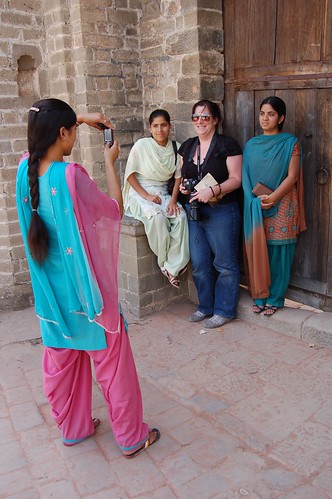
… there were some interesting carvings …
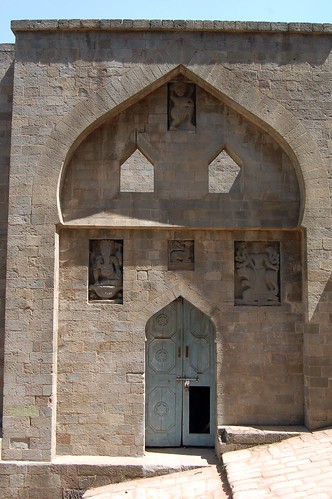
… including this one of Ganesha, the elephant-headed Hindu god.

Darshani Darwaza, a doorway leading to a shady courtyard, toppled pillars and a couple small temples.

This carved wall reminded me of Angkor Wat in Cambodia, but the rest of the Kangra Fort’s ornate palace was destroyed in an earthquake.
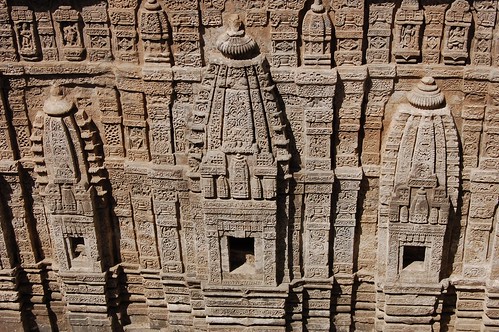
View of the river valley and the Himalayas.
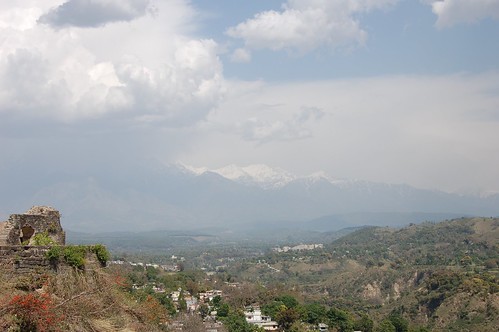
Here are a few more shots from our visit to the Kangra Fort.
The Indifest travel blog has a nice write-up of Kangra Fort, including this interesting statement.
This fort has the unique distinction of being ruled by great Hindu Kings, Muslim Invaders, Sikh Maharaja and Christian Rulers of British empire.
Back in McLeod Ganj, we asked Sanju to drop us off for a little shopping. Minutes after we exited the taxi, the sky burst open, blasting the market with hail and freezing rain. We stood under a market stall awning, hoping the storm would blow over quickly. When it didn’t, we called Sanju back to drive us the short distance to the McLlo Restaurant. Everyone and their mother had the same idea, so we crammed into a corner table and watched the poor suckers stuck in the rain outside.

After a delicious dinner, we bought cakes to enjoy back at our cottage. They looked better than they tasted, but cake is always a good way to end a fun day!


